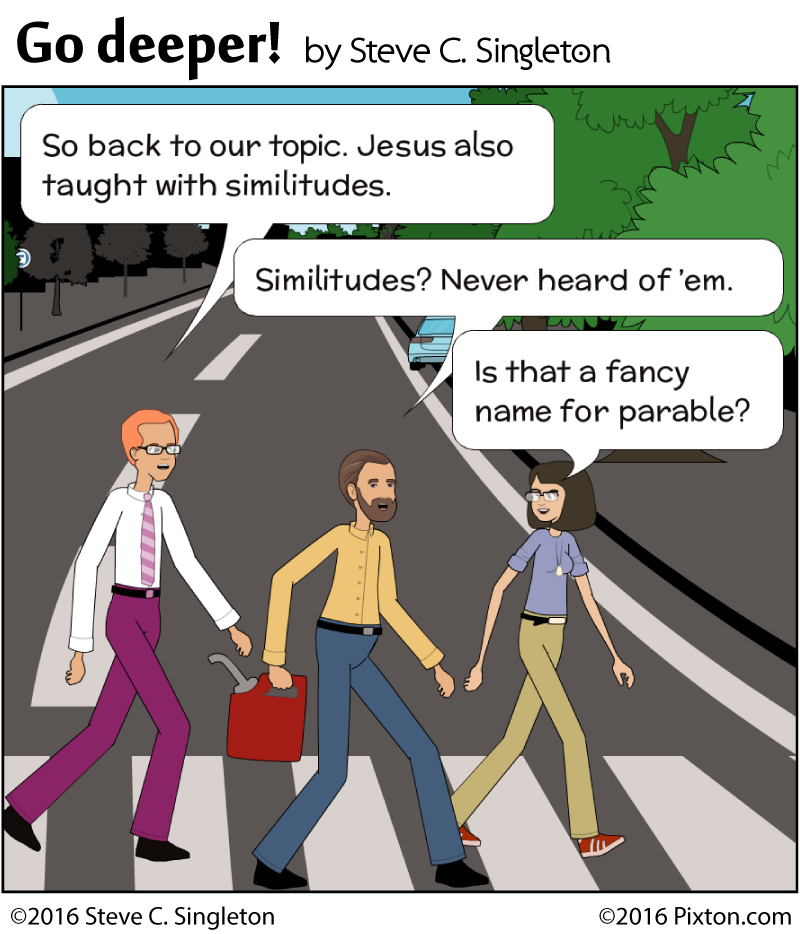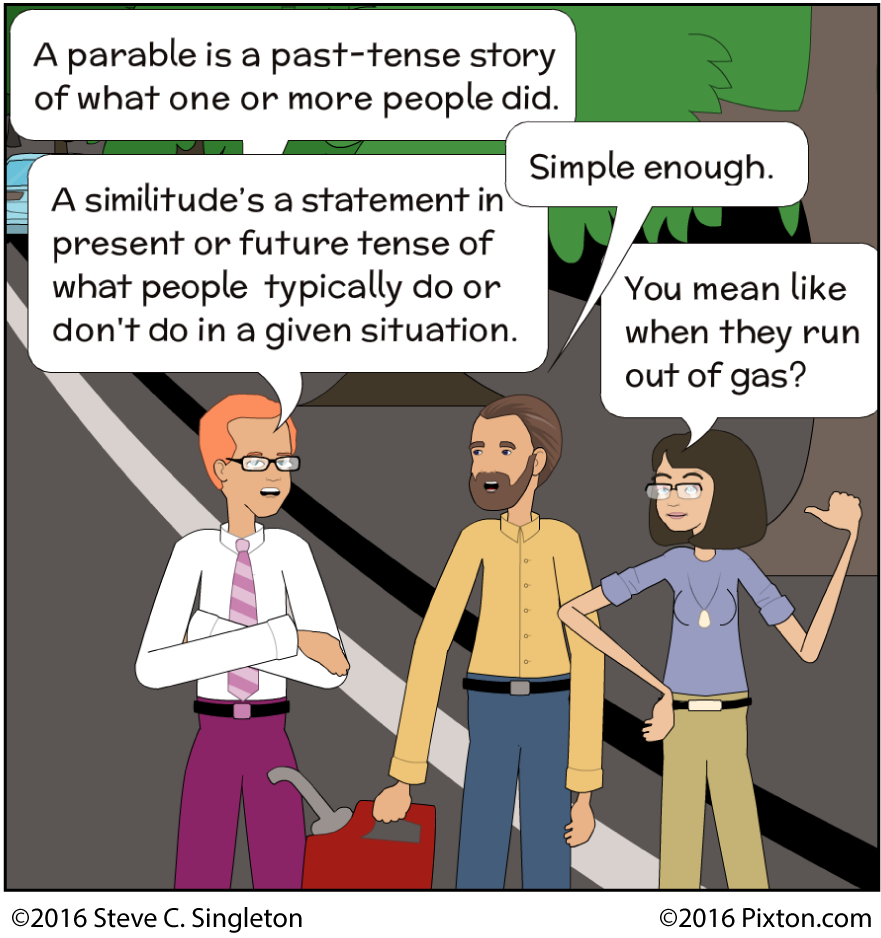The Similitudes of Jesus
Harnessing the typical
Among the many literary devices that Jesus used, the similitude was one of His favorites. What is a similitude? Sometimes ‘similitude’ is used as a synonym for ‘parable,’ but there is a difference. It is a brief statement, using either the present or future tense, of what people typically do or don’t do in a given situation. Lying behind a similitude are the cultural assumptions that both the speaker and the hearers share. As the secondary audience, separated from the oral teachings of Jesus by 2000 years and nearly half the world around, we definitely encounter some barriers to our understanding of some of His similitudes.
Two examples of similitudes
For example, in the Similitude of the Lost Sheep (Matthew 18:12), Jesus asks:
What do you think? If a man owns a hundred sheep, and one of them wanders away, will he not leave the ninety-nine on the hills and go to look for the one that wandered off?
Although Jesus asks the question in a way that reveals his expectation that his hearers will agree with him, his question might very easily spark a debate among members of his audience. Would a shepherd really leave his flock exposed to danger in order to find the one lost sheep? Some in the crowd might argue that this would be a very foolish thing to do, for he runs the risk of losing even more sheep while he is gone on his search. Others would reply that his concern for the lost sheep would compel him to take such a risk.
Thinking of this similitude more deeply than its surface prompts us to consider the risks that our Savior took to save us. In a similar way, when Paul says that Christ “loved me and gave himself for me” (Galatians 2:20), he is seeking to emphasize the infinite worth of one individual in the eyes of Christ. In contrast to the hesitation some shepherds might experience as they consider risking the 99 for the sake of the one, Jesus did not hesitate to take up the task of seeking us and saving us.
Here is another familiar similitude of Jesus (Luke 8:16):
No one lights a lamp and hides it in a clay jar or puts it under a bed. Instead, they put it on a stand, so that those who come in can see the light.
Jesus speaks this similitude immediately after his explanation of the Parable of the Sower and the Soils. Its import seems to be that Jesus intends for the parable to enlighten the understanding rather than obscuring it. In another context, however, he uses the same similitude, with slightly different wording, for a new application (Luke 11:33):
No one lights a lamp and puts it in a place where it will be hidden, or under a bowl. Instead they put it on its stand, so that those who come in may see the light.
In this context, Jesus is responding to the way in which many people witnessing His miracles stubbornly asked Jesus for signs. Jesus was using the similitude to say that He was not hiding His identity. Both His miracles and His preaching should have been like brightly shining lamps to reveal who He was and inspire confidence in Him.
This same similitude occurs a third time (Matthew 5:15):
Neither do people light a lamp and put it under a bowl. Instead they put it on its stand, and it gives light to everyone in the house.
Here, Jesus is not speaking of revealing Himself but of the revelatory impact His disciples would have on the people they encountered. In the next verse he says:
In the same way, let your light shine before others, that they may see your good deeds and glorify your Father in heaven.
From these examples we learn that Jesus is able to employ the same similitude in three different contexts. What they all share is the concept of providing insight beyond what would otherwise be available.
Many other examples
Here is a partial list of other similitudes that Jesus uses in his teachings:
Matthew 5:14 – The visibility of a hilltop town
Matthew 5:13 – The worthlessness of unsalty salt
Matthew 7:9-10 – The parent’s good gifts to his son
Matthew 7:16b-19 – The kind and quality of the fruit reveals the nature of the plant
Matthew 9:15 – Wedding guests cannot mourn in the presence of the groom
Matthew 9:16-17 – The new and the old are incompatible
Matthew 10:24-25 – Students can never be greater than their teacher, nor servants than their master
As you read through the four accounts of the gospel story, find additional similitudes to add to this list.
Want to go deeper?
Here are some resources if you are interested in learning more about similitudes:
- Leland Ryken. “’I Have Used Similitudes’: The Poetry of the Bible.” Bibliotheca Sacra 147, 587 (July 1, 1990): 259-269.
Starting with this quotation of God in Hosea 12:10, Ryken considers the use of metaphorical language throughout the Bible. He recommends starting with the literal level of comparison, followed by carrying over the meaning to its application. This second step is often left for the hearer/reader.
- W. O. E. Oesterley. “Similitudes, Parables, Illustrations, Allegories,” 61-92 in The Historical Jesus: Critical Concepts in Religious Studies, Craig Evans, ed. (New York: Routledge, 2004).
Carefully distinguishes between similitudes and other sayings of Jesus.
- Howard Marshall. I Believe in the Historical Jesus. Vancouver, B.C.: Regent College, 2004. See especially 125-142.
Explains and critiques what Rudolf Bultmann and his followers asserted as criteria for determining which sayings of Jesus can be validated as historical.




